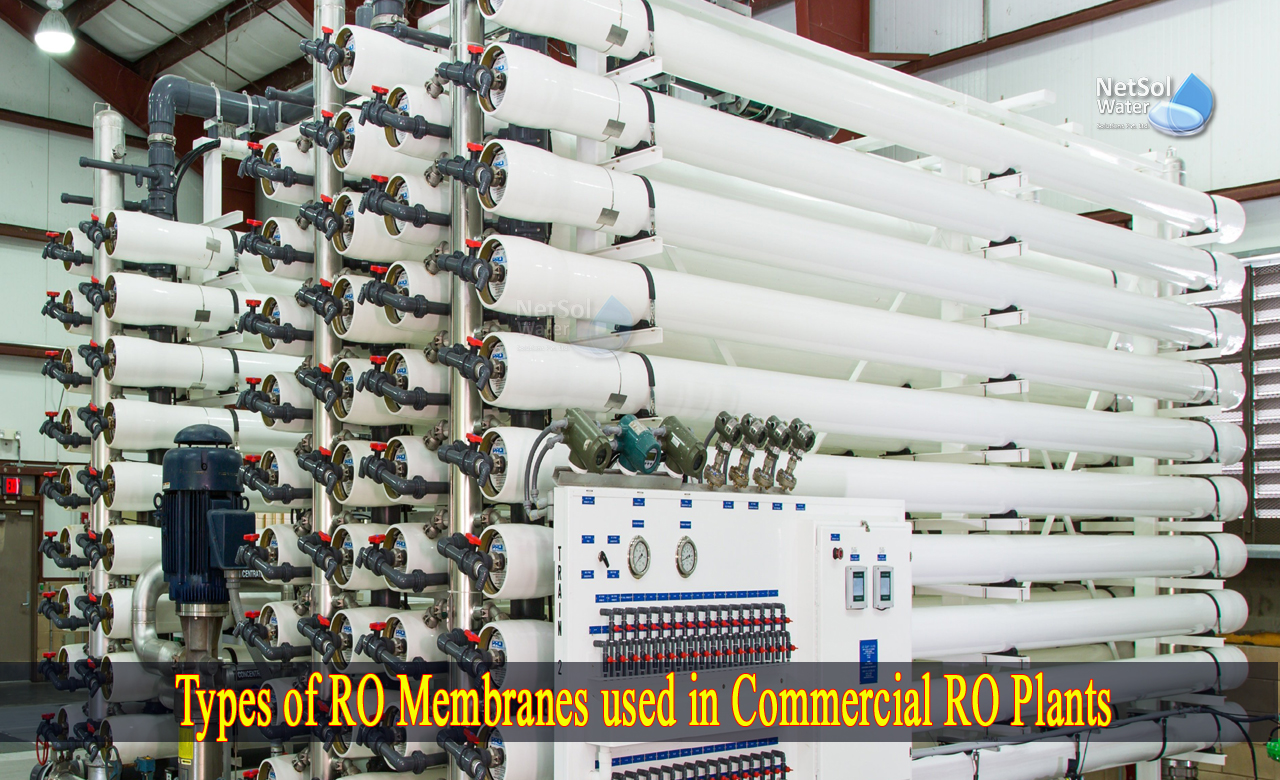How many types of RO membrane used in Commercial RO Plants?
Moritz Traube created the first synthetic membrane known to exist in 1867. His most effective membrane, which he employed to research osmosis, was a precipitated layer of copper ferrocyanide. Later on, asymmetric cellulose acetate membranes with a comparatively high flux and effective salt rejection were demonstrated by Loeb and Sourirajan in 1963. When Gulf General Atomics and Aerojet General used the cellulose acetate (CA) membranes in spiral wound modules to filter water, RO membranes made their commercial debut.
Types of RO Membranes
Let us go through the di?fferent types of RO Membranes:
· Cellulose Acetate Membranes (CA)
The asymmetric cellulose acetate membranes have NaCl rejection percentages of around 99.5%.The degree of acetylation in commercial CA membranes is roughly 2.7. This mixture offers a nice compromise between permeate flux and salt rejection. Combining CA with CTA reduces permeability while boosting mechanical stability and resistance to hydrolysis.
CA membranes provide a number of advantages:
1: They have superior mechanical qualities and are comparatively simple to build.
2: They also withstand chlorine damage reasonably well.
3: These membranes have a far higher tolerance to free chlorine, which can reach 5 ppm.
· Cellulose Triacetate Membranes (CTA)
A little amount of chlorine in the water source is needed to prevent germs from growing on CTA (Cellulose Triacetate) membranes, which are paper by-product membranes attached to synthetic layers.
· Thin Film Composite Membranes (TFC)
Chlorine must be eliminated from the water before it enters the TFC (Thin Film Composite) membrane, which is comprised of a synthetic substance. These membranes are more durable and can be employed at a higher temperature (45°C).The majority of TFC membranes are constructed from a porous, highly permeable support, like polysulfone, that is covered with a thin layer of cross-linked aromatic polyamide. The membrane's ability to reject salt is provided by the coating.
TFC membranes provide a number of advantages:
1: They provide high rejection and high flux.
2: They can reject some low molecular weight organics.
3: They are more stable than CA over a wider pH range and at greater temperatures.
Characteristics of RO Membranes
Thegeneralcharacteristicsofreverseosmosismembranesaredescribed below:
|
S.No. |
Limitations of various parameters |
Cellulose acetate (CA) membranes |
Cellulose triacetate (CTA) membranes |
Thin film composite (TFC) membranes |
|
1. |
pH |
2 - 8 |
4 - 9 |
2 - 11 |
|
2. |
Temperature |
5°C - 30°C |
5°C - 35°C |
5°C - 45°C |
|
3. |
Resistance to bacterial attack |
Poor |
Fair/good |
Excellent |
|
4. |
Resistance to damage by chlorine |
Fair (0 - 1 ppm) |
Good (0 - 3 ppm) |
Poor (0 - 0.1 ppm) |
|
5. |
Typical rejection of salts at 60 psi |
85% - 92% |
92% - 96% |
94% - 98% |
|
6. |
Typical rejection of nitrate at 60 psi |
30% - 50% |
40% - 60% |
70% - 90% |
|
7. |
Typical treated water production at 60 psi |
40 liter/m2of membrane/day |
40 liter/m2of membrane/day |
80 liter/m2of membrane/day |
|
8. |
Turbidity allowed in feed water |
Nil |
Nil |
Nil |
|
9. |
Ironallowedinfeed water |
1ppm |
1ppm |
0.1ppm |
|
10. |
Relative cost |
Low |
Medium |
High |
Fouling of RO Membranes
Fouling is a significant issue that the membranes experience. Fouling generally reduces flux and can happen on the surface of a membrane or inside its pores. Scaling, organics, colloidals and bio-fouling are the four main categories of fouling.
1: A biofilm forms on the membrane's surface as a result of bio-fouling, which is caused by microbial contamination of feed water and raises the membrane's barrier to water permeability.
2: Salts precipitate and settle on the membrane surface, which causes scaling.
3: Organic fouling is caused by chemicals like hydrocarbons that cover the surface of the porous support layer or clog its pores.
4: Particles like clay or silica that build up on the membrane's surface are the main causes of colloidal fouling.
Conclusion
By including disinfectants, anti-scaling chemicals and other pre-treatment procedures, fouling can be somewhat managed.However, these are not fixes for the issue. It is still a critical area that needs to be improved for RO membranes.
Netsol Water is Greater Noida-based leading water & wastewater treatment plant manufacturer. We are industry's most demanding company based on client review and work quality. We are known as best commercial RO plant manufacturers, industrial RO plant manufacturer, sewage treatment plant manufacturer, Water Softener Plant Manufacturers and effluent treatment plant manufacturers. Apart from this 24x7 customer support is our USP. Call on +91-9650608473, or write us at enquiry@netsolwater.com for any support, inquiry or product-purchase related query.



